Lemon Cake
This post may contain affiliate links. Read the full disclosure here.
This light and fluffy homemade lemon cake recipe with buttercream frosting and lemon curd filling has become a family favorite. The triple dose of lemon is balanced and pleasantly sweet to satisfy those citrus cravings.
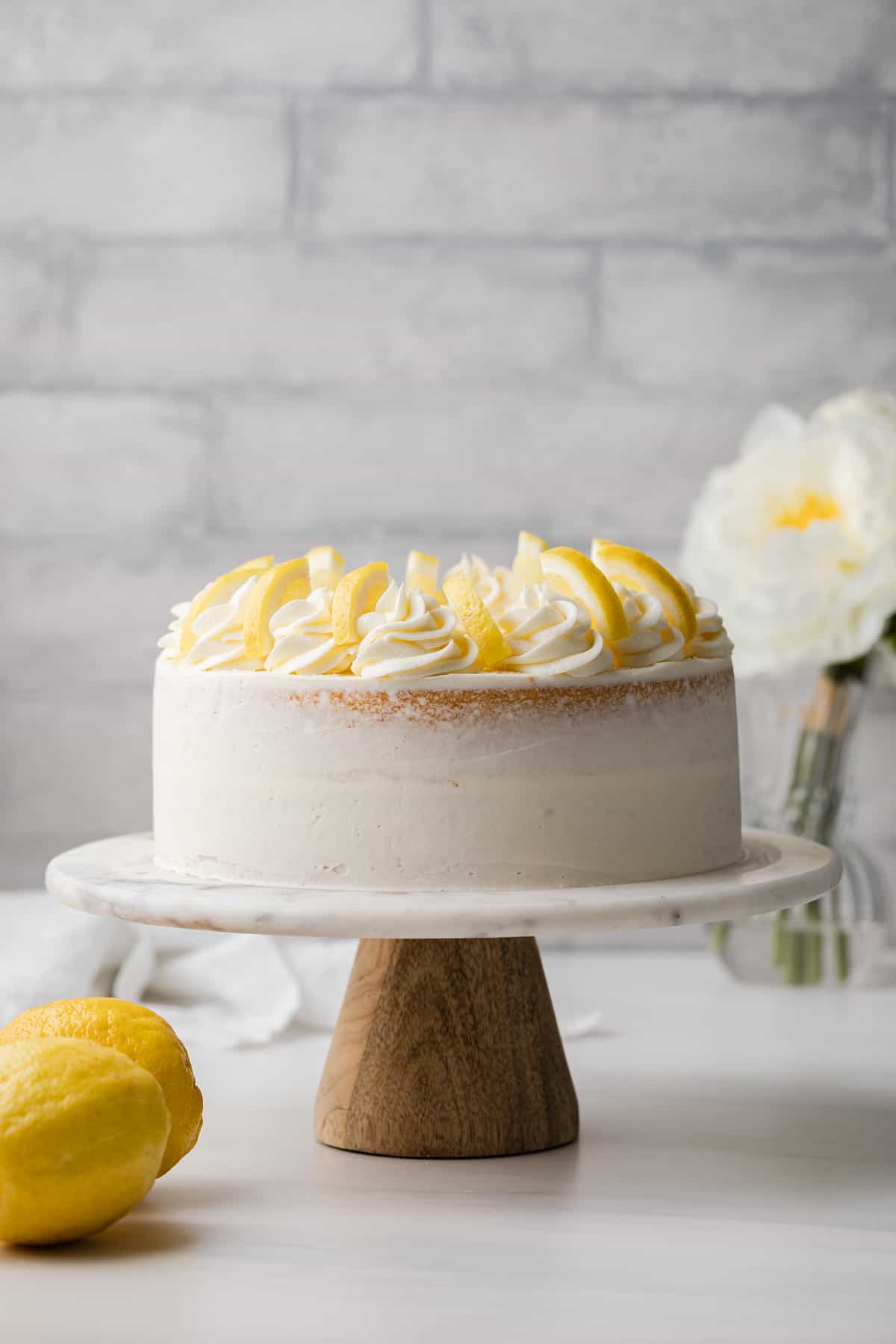
This is the best lemon cake recipe I have ever made. I adapted this recipe from my moist vanilla cake recipe.
You will notice that I have added lemon zest & juice to make it extra lemony! The key to getting good lemon flavor is to mix the sugar with lemon zest before creaming it with butter and oil.
The filling is my simple lemon curd recipe with gelatin. This helps keep the curd firm and stable.
The frosting is a simple lemon frosting and it gets its flavor from the curd. You could also use my lemon cream cheese frosting on your homemade lemon cake.
For a fun garnish, you can also use my candied orange recipe to make candied lemons.
Why this recipe works
- Sugar is used to extract the oils from the zest to create a well-balanced, not-too-tart lemon flavor.
- The oil in the cake makes the texture light and fluffy with a soft crumb.
- The gelatin in the lemon curd keeps it firm and prevents it from seeping out of the cake.
You will love the light and fluffy texture of this homemade lemon cake recipe.
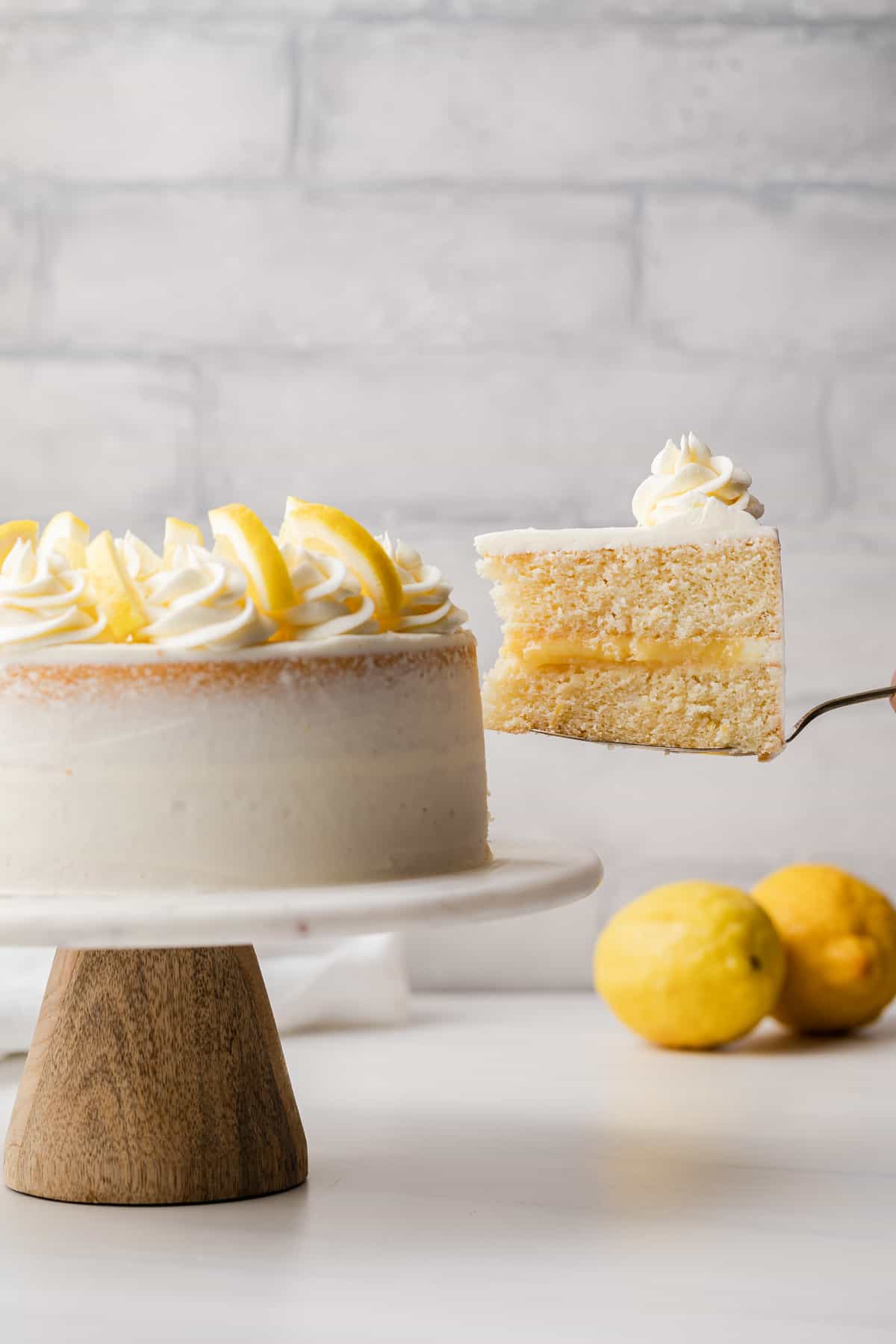
What you need
This is the best lemon cake recipe because it uses fresh ingredients. Let’s discuss just a few of the key ingredients:
Ingredients
This is a short overview of the main ingredients I used and why I chose them. The full recipe can be found at the bottom of the post!
- Lemon juice & zest: I recommend using freshly squeezed lemon juice because it is milder than bottled. These both add to the rich lemon profile of the cake.
- Butter & oil: This butter and oil ratio works to draw out the lemon flavor of the cake. The oil keeps the cake moist and soft.
- Cake flour: I have a homemade cake flour recipe, but I recommend using the real stuff for this recipe.
- Eggs: The eggs give color and structure to the cake.
- Sugar: This sweetness balances the tart flavor of the lemons.
- Ginger: Ground ginger is used in the cake batter. It is barely detectable, but I feel it enhances the lemon flavor.
Equipment
This is a list of tools I used to make the homemade lemon cake recipe.
- Mixer: I prefer to use a stand mixer with a paddle attachment. However, a handheld electric mixer will work, as well.
- Cake pans: I like using two 9-inch cake pans for this recipe.
- Sieve: You will need a fine-mesh sieve to press the curd through.
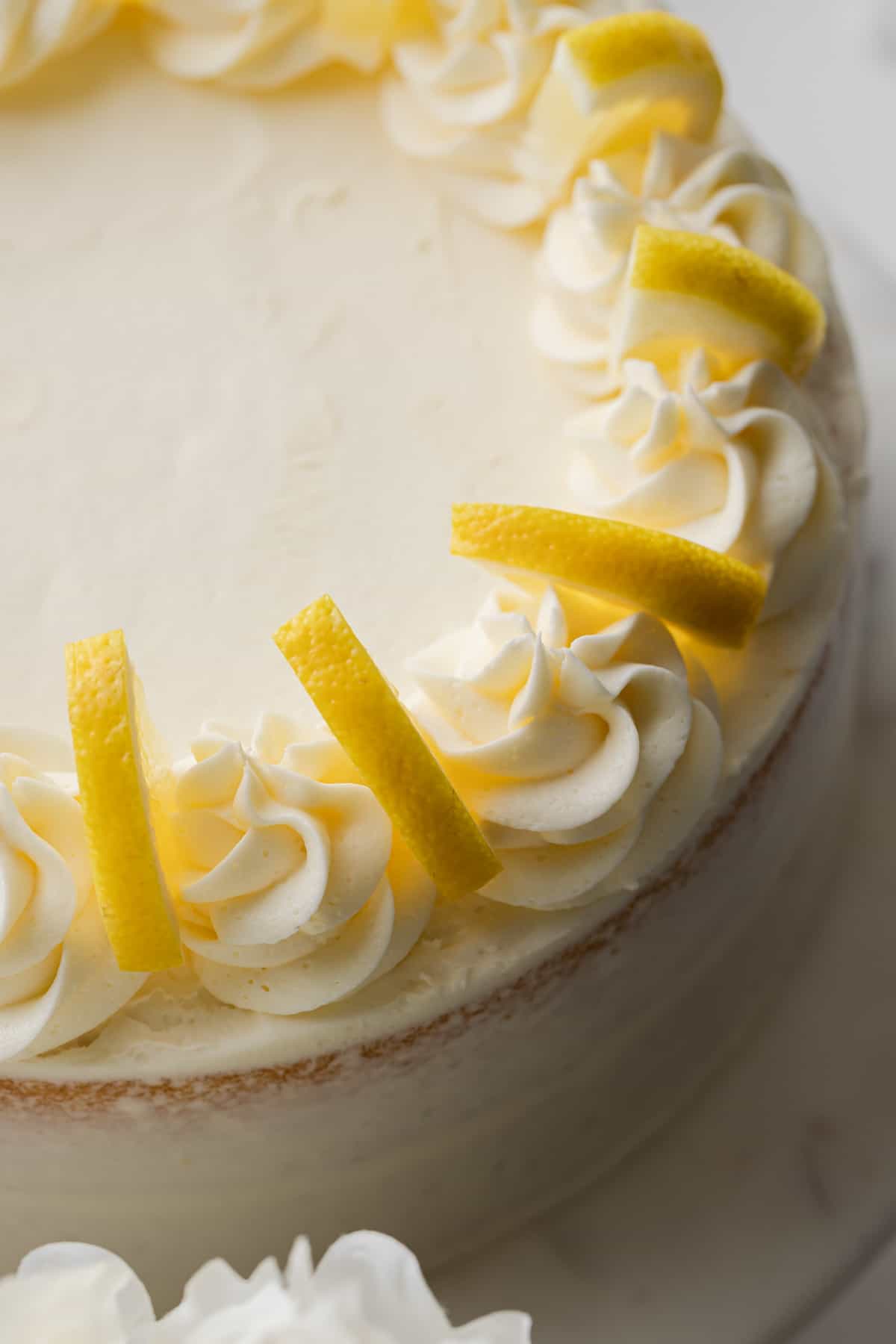
How to make lemon cake
1. Make the filling
To start the lemon layer cake, you will prepare the filling.
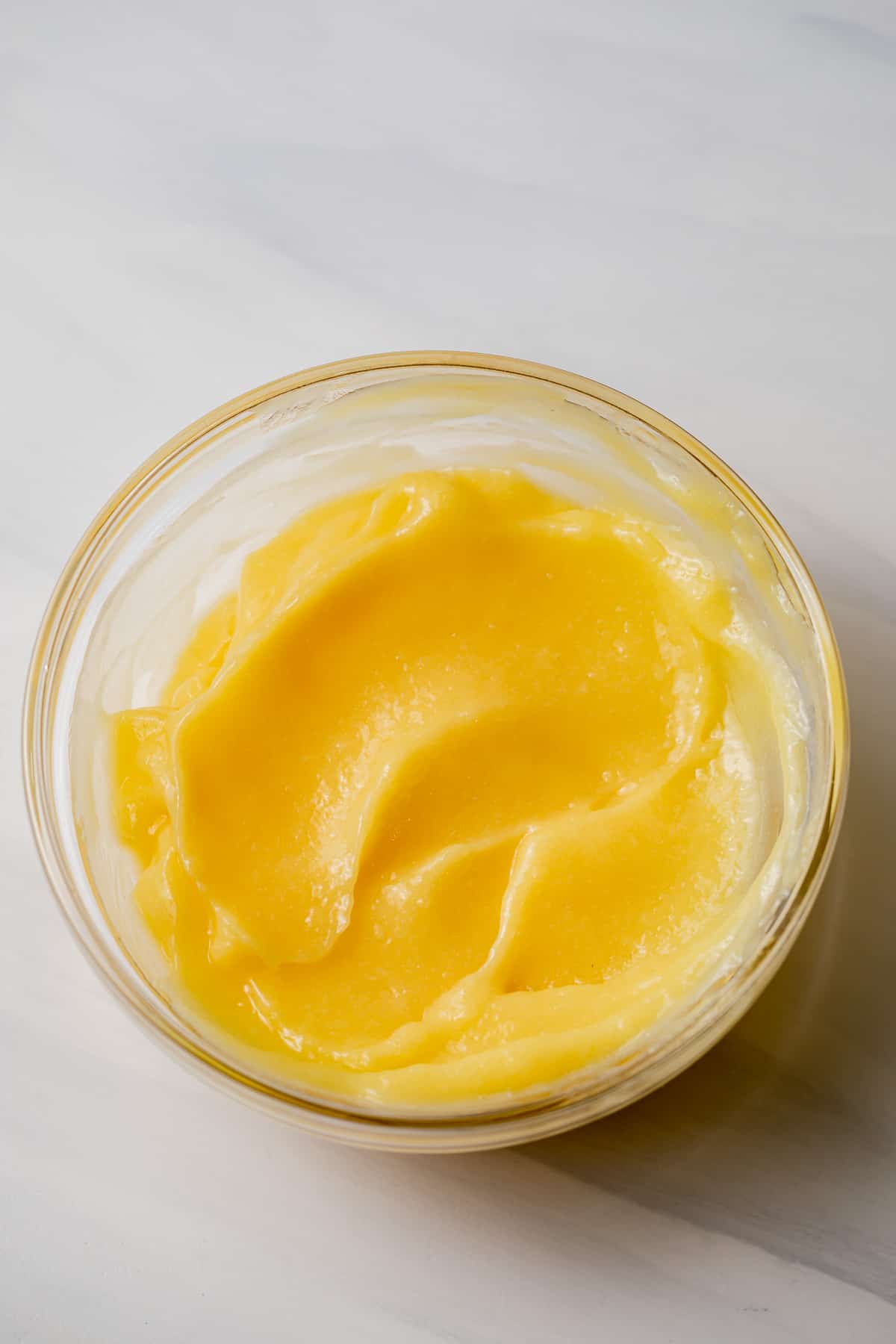
- Sprinkle gelatin over 1 tablespoon of lemon juice in a small bowl. Then, set aside.
- Grab a small saucepan. Combine the eggs, egg yolks, and sugar. Then, whisk until frothy and smooth, about 4 minutes. Finally, whisk in the remaining lemon juice and lemon zest.
- Cook over medium-low heat. Stir constantly until thickened. This will take about 7-10 minutes.
- Remove done curd from the heat immediately. Then, stir in gelatin until fully dissolved and well-blended.
- Stir in the butter until fully combined.
- Then, press the curd through a fine-mesh sieve into a bowl. Cover the bowl with plastic wrap. It needs to touch the surface of the curd to prevent a film from forming.
- Place the curd in the fridge for at least 4 hours. You can also store it for up to 24 hours. It will thicken once set. Stir vigorously before using.
2. Make the cake
Now that the filling is complete, you will work on the lemon cake layers.
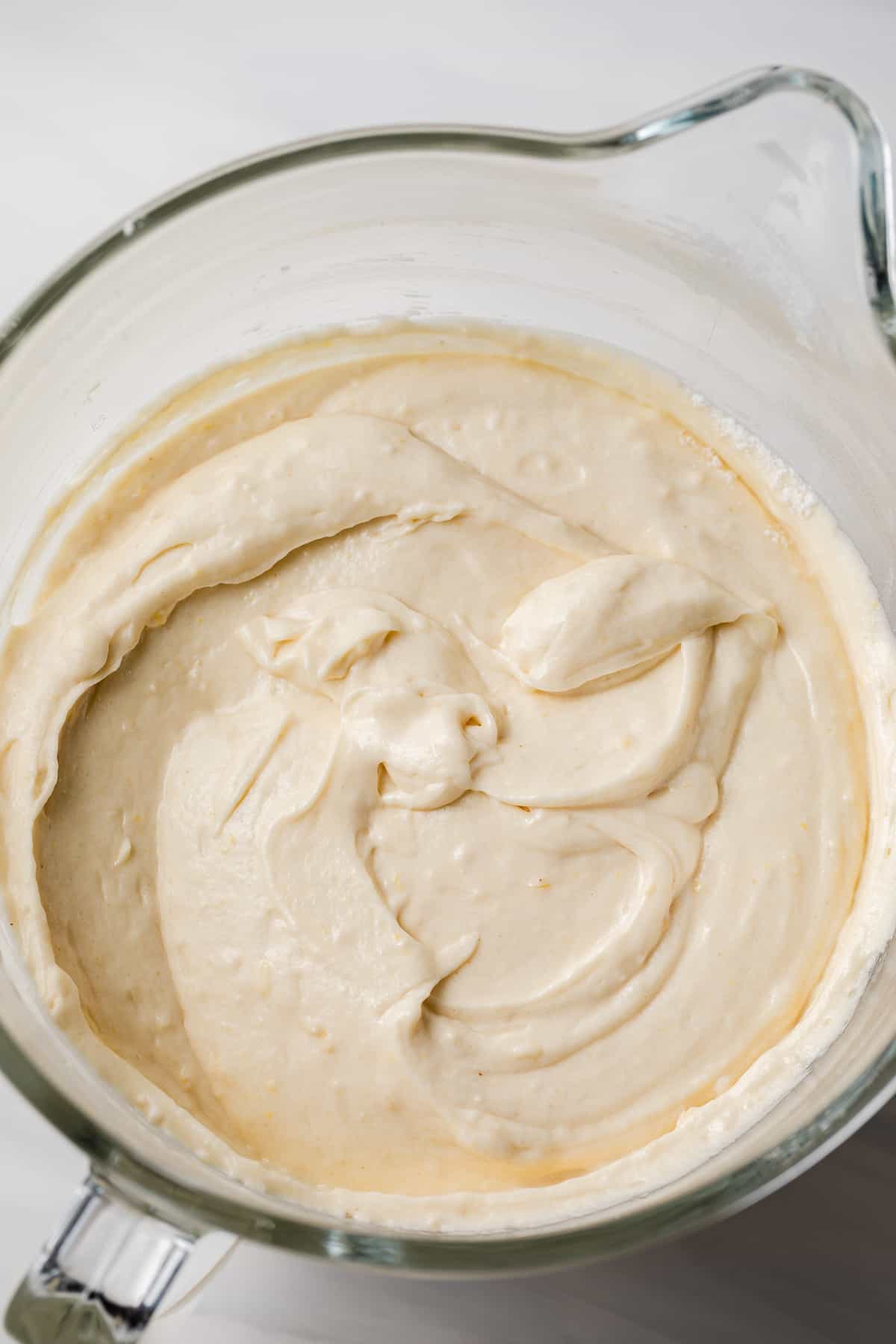
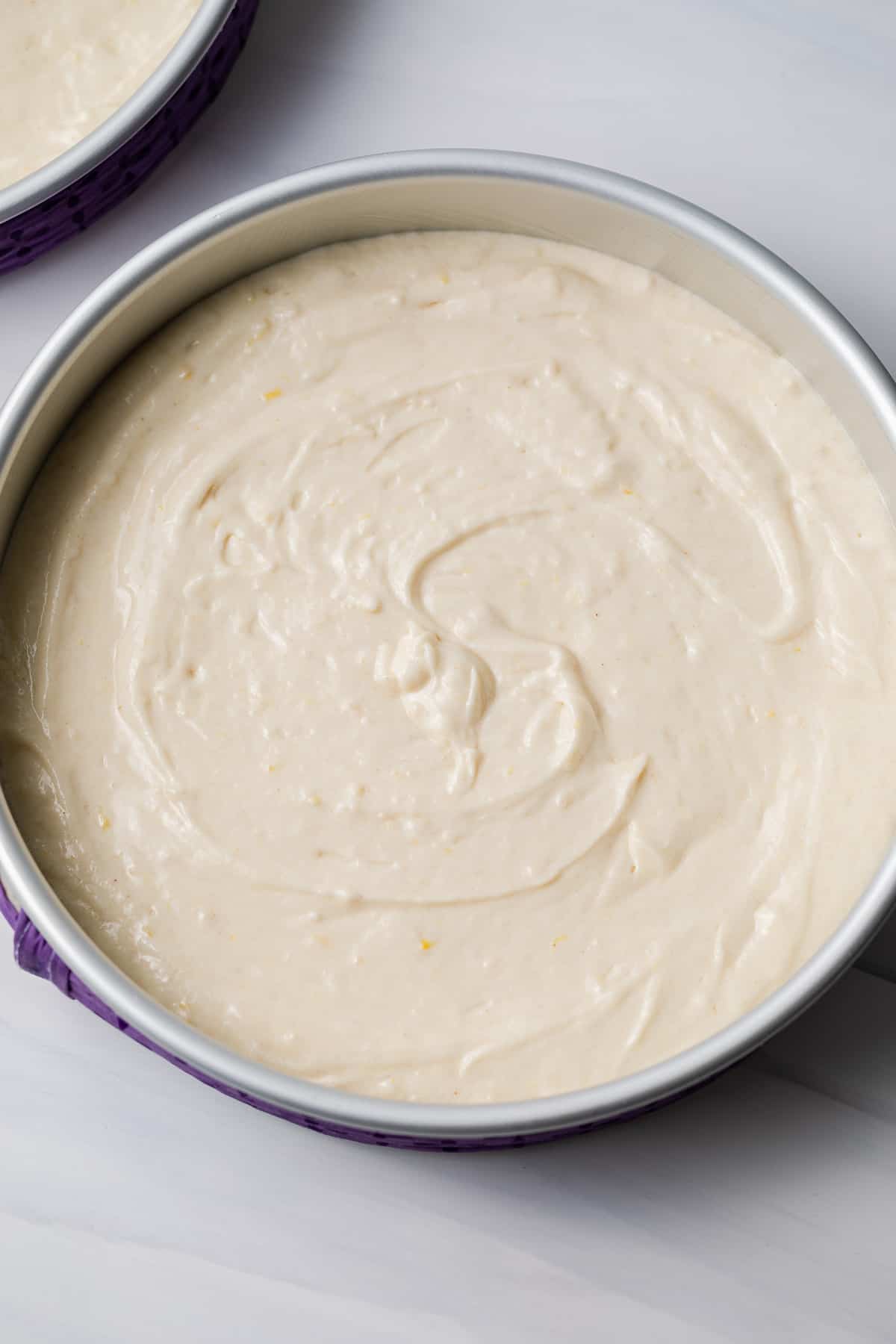
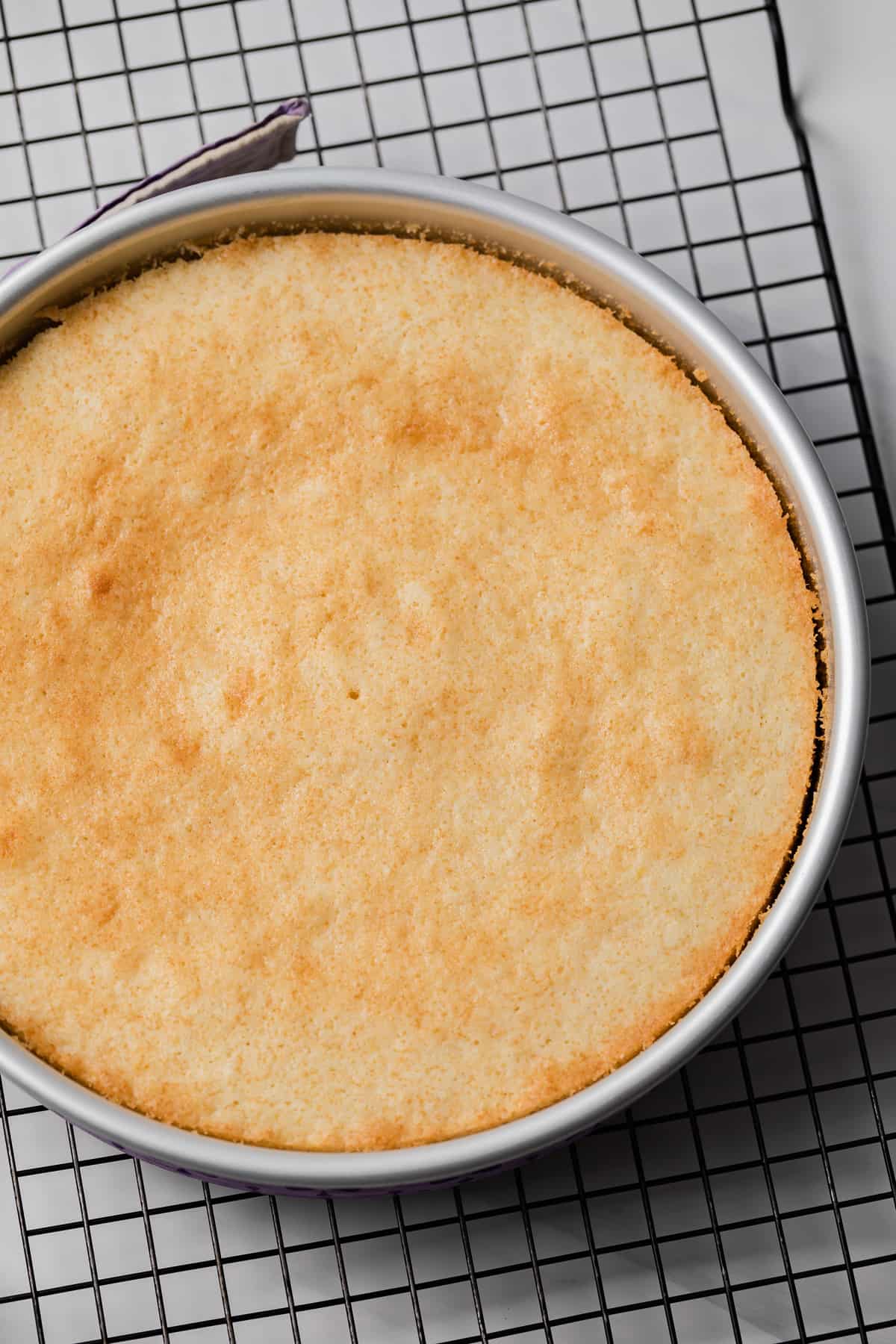
- Preheat the oven to 350°F. Grease the inside bottom and sides of the two 9-inch round pans.
- Then, line the pans with parchment paper cut to fit the bottoms. Lightly grease the paper, as well.
- Dust the inside of the sides and bottom with flour. Then, tap out any excess. Wrap the pans with wet bake-even strips. Set aside for later.
- Use a stand mixer with a paddle attachment or a handheld electric mixer for mixing. Then, beat the sugar and lemon zest on medium speed for at least 5 minutes.
- Then, add the oil and butter to this mixture. Mix on medium-high speed until light and fluffy. This should take about 5 minutes.
- Add eggs to the mix one at a time. Mix for 20 seconds after each addition to the mixture. Then, beat in the vanilla.
- In a medium bowl, combine the flour, baking powder, ginger, and salt. Then, stir with a whisk and add half to the mixture. Beat on low speed until almost incorporated.
- Then, mix in buttermilk and lemon juice. Add the remaining flour mixture. Beat on low until blended. Do not over mix.
- Divide the batter evenly between pans. Then, bake for 25-30 minutes. A toothpick inserted into the center should come out clean with only a few moist crumbs attached.
- Cool cake layers in the pans. Then, transfer to a wire rack and allow to cool completely before frosting.
3. Make the frosting
The frosting adds sweetness and flavor to the lemon layer cake.
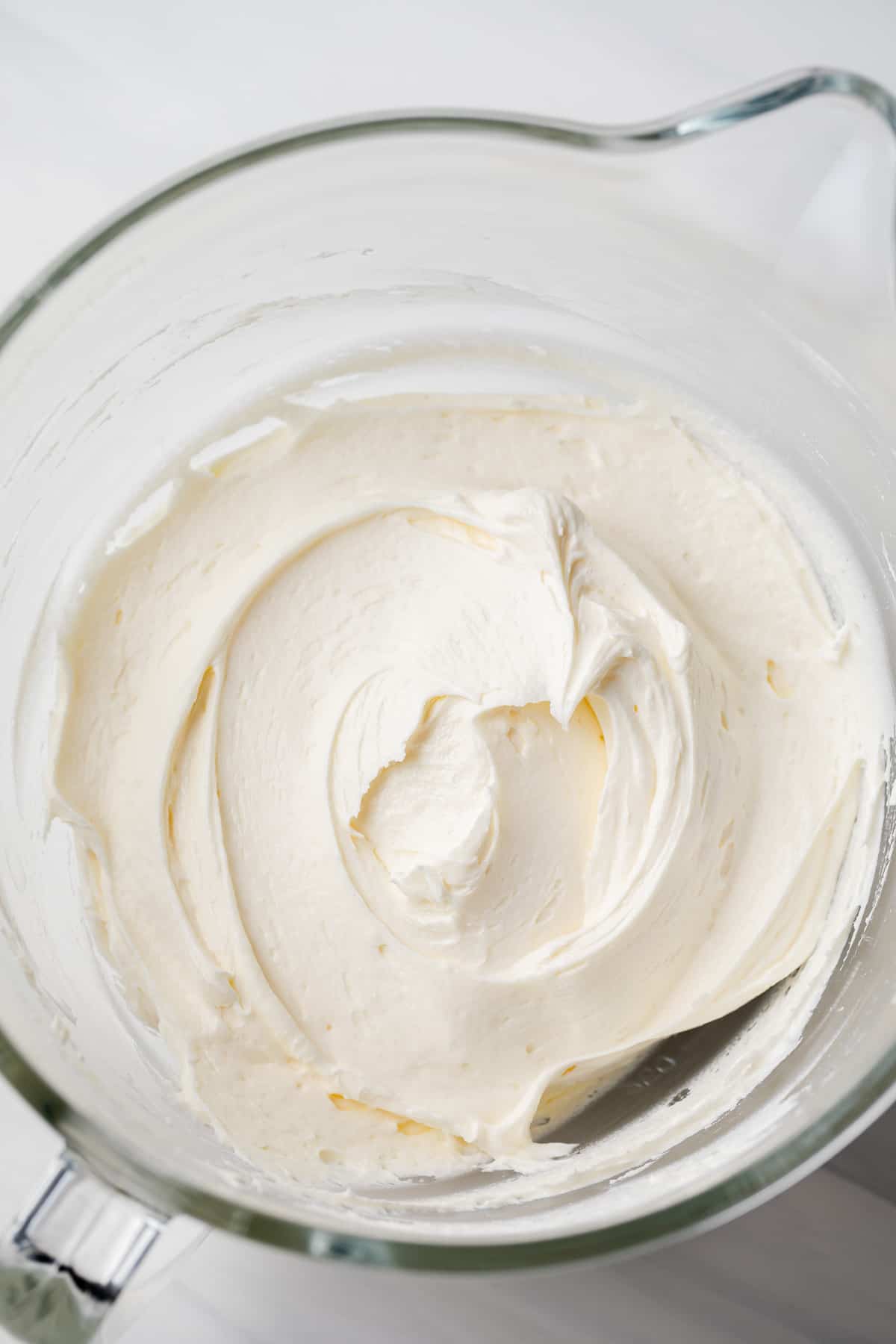
- Use your mixer to beat the butter and salt on medium-high speed until creamy and pale in color. This should take 5 minutes.
- Add half of the confectioners’ sugar. Then, beat on low speed until the sugar has fully moistened.
- After that, turn up the speed to medium-high. Beat until well incorporated or about 3-5 minutes.
- Add the remaining confectioners’ sugar. Then, beat on low speed until it has fully moistened.
- Then, turn the speed up to medium-high and beat until well-incorporated or about 3-5 minutes. Turn the mixer on low speed and slowly, add the heavy cream.
- Turn the mixer to medium heat and beat until the cream is well-incorporated or about 3-5 minutes.
- Finally, add the lemon curd and gently mix on low speed until fully combined.
4. Assemble the cake
Build the lemon layer cake from the cake layers, lemon curd and frosting.
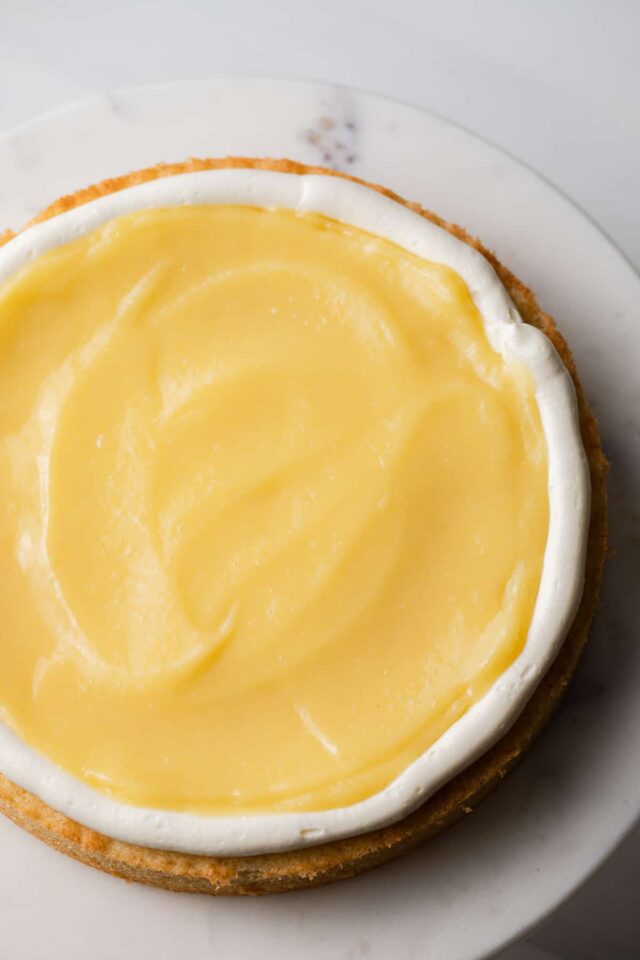
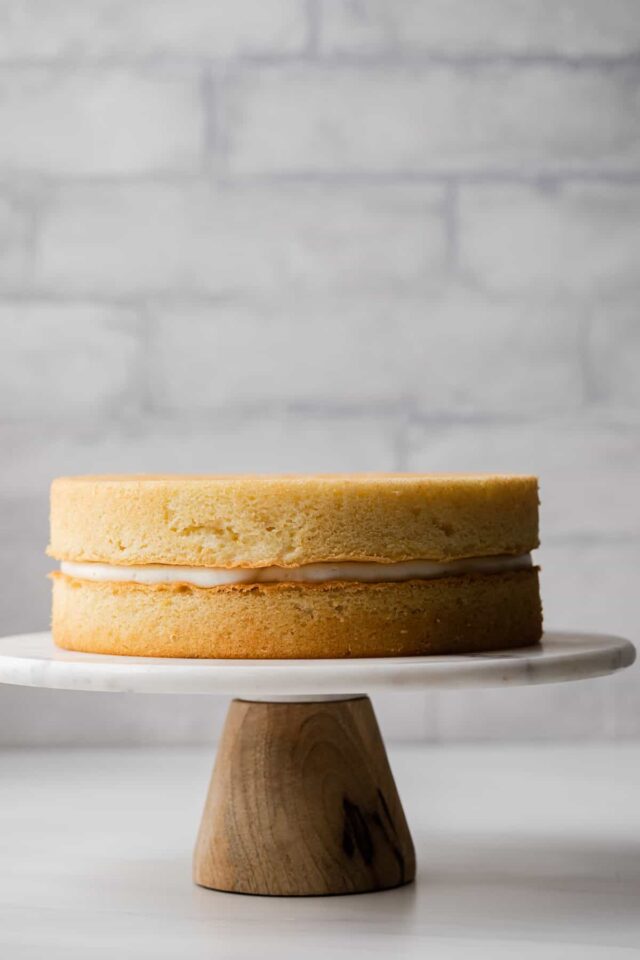
- Place a cake layer onto the serving platter. Pipe a dam of frosting around the outer edge.
- Spread the lemon curd filling inside the dam in an even layer.
- Top with the second cake layer. Then, cover the top and sides of the cake with frosting.
- Finally, immediately refrigerate the cake until firm. This should take about 1 hour.
- Decorate your homemade lemon cake with candied lemon slices prior to serving. You can make the lemon slices from my candied orange slices recipe.
Jen’s best tips
- If you prefer not to use gelatin, leave it out. Be sure to cook the curd long enough to reach a super thick consistency at 180°F.
- Do not substitute the oil with more butter. The oil keeps the cake light and moist.
- Do not substitute the cake flour with all-purpose flour. I tested it with all-purpose flour and the final product was compromised. It lacked the superior soft crumb of the cake flour version.
- Use bake even strips to ensure the cake layers bake evenly. These are cloth strips that are soaked in water and wrapped around the cake pans.
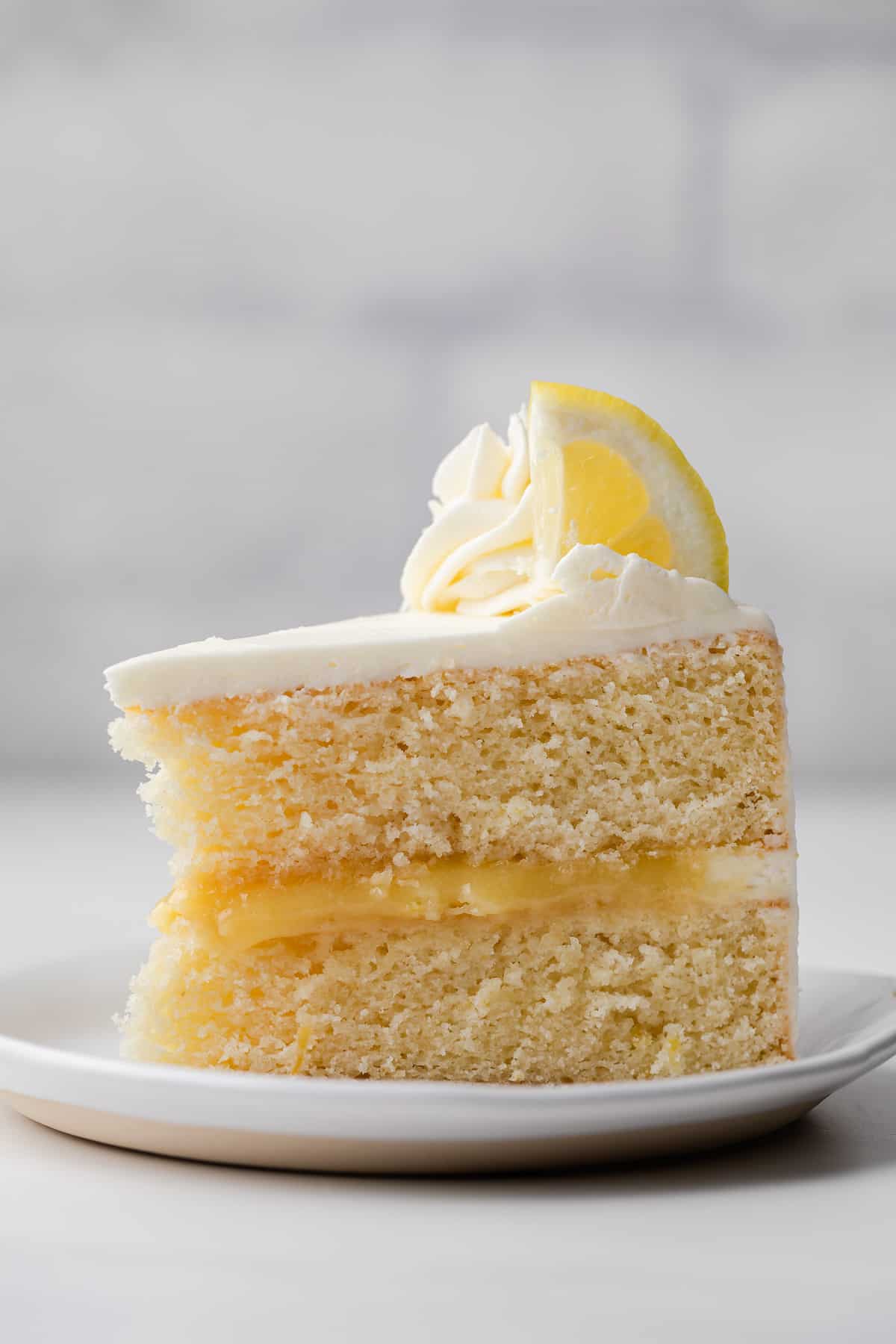
Storing & Freezing
To store: You can store a fully-assembled cake, tightly covered, in the fridge for no more than 5 days.
You can also make the cake layers a day prior to assembling the homemade lemon cake. Once cooled completely, tightly cover and store in the fridge.
The frosting and lemon curd can also be made one day prior to assembly. Keep tightly covered and store in the fridge. Prior to using, bring frosting to room temperature, and then, re-whip it.
To freeze: Frosted and unfrosted cake layers can be stored for no more than 3 months in the freezer.
Wrap tightly with plastic wrap. Then, wrap with two layers of aluminum foil. Thaw overnight in the fridge. Then, bring to room temperature prior to using or serving.
More lemony good recipes to try
If you loved this lemon layer cake, take a look at some of my other lemon favorites on the blog:
- Lemon Meringue Pie
- Lemon Blueberry Muffins
- Coconut Lemon Bars
- Lemon Thumbprint
- Lemon Tart
- Lemon Cheese Pie
Lemon Cake
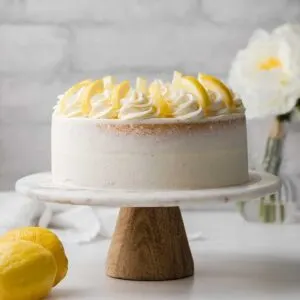
Ingredients
For the filling
- 1 teaspoon unflavored gelatin powder
- ⅔ cup (160 ml) fresh lemon juice, from about 2 lemons
- 4 large eggs
- 2 large egg yolks
- 1 cup (200 g) granulated sugar
- 1 tablespoon lemon zest, from about 1 lemon
- ¼ cup (56 g) unsalted butter
For the cake
- 2 cups (400 g) granulated sugar
- 2 tablespoons lemon zest
- ½ cup (120 ml) canola oil, or vegetable oil
- ½ cup (113 g) unsalted butter, room temperature
- 4 large eggs, room temperature
- 1 teaspoon vanilla extract
- 3 cups (360 g) cake flour
- 1 tablespoon baking powder
- 1 teaspoon ground ginger
- ½ teaspoon salt
- ¾ cup (180 ml) whole milk, room temperature
- ¼ cup (60 ml) fresh lemon juice
Make the frosting
- 1 ½ cups (339 g) unsalted butter, softened
- ⅛ teaspoon salt
- 4 cups (480 g) confectioners' sugar, sifted
- 2 tablespoons heavy cream
- ⅓ cup (113 g) lemon curd, taken from the filling above
Instructions
Make the filling
- In a small bowl, sprinkle the gelatin over 1 tablespoon of the lemon juice and set aside.
- In a small saucepan combine the eggs, egg yolks, and sugar. Whisk until frothy and smooth, about 4 minutes. Whisk in the remaining lemon juice and lemon zest.
- Cook over medium-low heat, stirring constantly, until thickened, about 7-10 minutes. You’ll know the curd is ready when it coats the back of a wooden spoon and is about the thickness of pudding.
- Immediately remove from heat and stir in the gelatin until fully dissolved and incorporated. Stir in the butter until fully combined.
- Press the curd through a fine-mesh sieve into a bowl. Cover the bowl with plastic wrap. Make sure the wrap is touching the surface of the curd to prevent a skin from forming.
- Refrigerate for at least 4 hours or up to 24 hours. The curd will be thick once set. Stir it vigorously to loosen before using.
Make the cake
- Preheat the oven to 350°F. Grease the inside bottom and sides of two 9-inch round pans. Line the bottom of the pans with parchment paper cut to fit. Lightly grease the parchment paper. Dust the inside bottom and sides of the pan with flour, then tap out any excess. Wrap the pans in wet bake even strips. Set aside.
- Using a stand mixer with the paddle attachment or a handheld electric mixer, beat the sugar and lemon zest together on medium speed for at least 5 minutes. This helps extract the oils from the zest resulting in more lemon flavor.
- Add the oil and butter and mix on medium-high speed until light and fluffy, about 5 minutes. Add the eggs, one at a time, mixing for 20 seconds after each addition. Beat in the vanilla.
- Combine the flour, baking powder, ginger, and salt in a medium bowl. Stir with a whisk and add half to the butter mixture. Beat on low speed until the flour is almost fully incorporated.
- Mix in the milk and lemon juice, followed by the remaining flour mixture, and beat on low until just combined. Take care not to over mix.
- Divide the batter evenly between the prepared pans and bake for 25-30 minutes, until a toothpick inserted into the center comes out with only a few moist crumbs attached.
- Cool in the pans for 10 minutes then transfer to a wire rack and allow to cool completely before frosting.
Make the frosting
- In the bowl of a stand mixer fitted with the paddle attachment or a large mixing bowl with a handheld electric mixer, beat the butter and salt on medium-high speed until creamy and pale in color, about 5 minutes.
- Add half of the confectioners’ sugar and beat on low speed just until the sugar has fully moistened, then turn the speed up to medium-high and beat until well incorporated, about 3-5 minutes.
- Add the remaining confectioners’ sugar and beat on low speed just until the sugar has fully moistened, then turn the speed up to medium-high and beat until well incorporated, about 3-5 minutes.
- Turn the mixer on low speed and slowly add the heavy cream. Turn the mixer up to medium-high and beat until the cream is well incorporated, about 3-5 minutes.
- Add the lemon curd and gently mix at low speed until fully combined.
Assemble the cake
- Place one cake layer onto a serving platter. Pipe a dam of frosting around the outer edge. Spread the remaining lemon filling inside the dam in an even layer.
- Top with the second cake layer. Then, cover the top and sides of the cake with frosting. Immediately refrigerate the cake until firm, about 1 hour.
- Decorate with lemon slices just before serving.
Notes
- Gelatin: This will stiffen the curd to allow it to hold up under the weight of the cake. It also prevents it from separating the buttercream when added to the frosting. If you’re adamant about not using it, leave it out and be sure you cook the curd long enough to become super thick, 180°F.
- Lemon juice: I prefer freshly squeezed lemon juice. It’s milder than bottled. You can use bottled if it is an absolute must.
- Oil: Don’t substitute the oil with more butter. The oil in this cake is key to its light and moist texture. Use any flavorless oil you prefer.
- Cake flour: While I have a homemade cake flour recipe, I highly recommend using the real stuff. There’s less protein and that yields a supremely soft crumb. All-purpose flour will not give the same results. I tested both and cake flour is the true winner!
- Ginger: Omit it if you must but I find it enhances the lemon flavor. It doesn’t taste gingery in any way.
- Bake even strips: Wrap that cake pans in bake even strips. These are strips of cloth that are soaked in water. They help the cake to bake evenly so you get tall flat layers.
- Cake pans: I’ve only tested this recipe in two 9-inch pans. However, I imagine three 8-inch pans will work just as well. The layers will be thinner and the bake time may need to be adjusted. Keep a close eye on them and start checking for doneness once the top center no longer looks wet. Don’t open the oven door before then or the cakes will fall!
- For any other pan sizes, you can use online cake pan calculators to guide you in how to make adjustments.
- The fully assembled cake will keep for up to 5 days covered tightly and stored in the refrigerator.
- The cake layers can be made a day in advance. Once cooled, wrap tightly in plastic wrap and refrigerate.
- The frosting and lemon curd can also be made a day in advance. Cover tightly and keep refrigerated. Bring the frosting to room temperature and re-whip before using.
- Both the frosted cake and unfrosted cake layers will keep for up to 3 months stored in the freezer. Wrap tightly in plastic wrap followed by two layers of aluminum foil. Thaw overnight in the refrigerator then bring to room temperature before serving/using.
Nutrition
The nutrition information provided is for convenience and as a courtesy only. It is not guaranteed to be accurate because nutrition information can vary for a variety of reasons. For precise nutritional data use your preferred nutrition calculator and input the exact ingredients and brands you used in the recipe.

Hello Jen
Is it okay to use cake flour that is enriched and bleach like the Swans Down cake flour or is it better to use organic unbleached cake flour. I have the unbleached all purpose flour by Bob Mills.
Either will work just fine.
Hello Jen
Does it matter if you use buttermilk or whole milk for the lemon cake. What flavor does the butter milk give.
Thanks
You want to use the milk that is called for in the recipe because that is how it was tested and will give you the results that are promised. In this case, the recipe calls for whole milk.
Hi Jen,
The lemon cake is it just as good without the lemon curd filling, Is there a big difference without the filling,
Thanks Valerie
The filling adds so much lemon flavor to the cake. You could make it without but the flavor will be milder.
Thank you for sharing this recipe. I stumbled across your website last week when I was searching for inspiration and just served this cake for a family birthday.
I substituted the icing for your Swiss meringue buttercream.
Really enjoyed making this and all your helpful tips along the way.
Hi, can you please recommend if I can halve this recipe to make a 6” cake.
Halving the recipe will yield you one 9-inch layer. I’m not certain if that is enough for a 6-inch layer cake as I’ve never made a 6-inch cake before. If you give it a try, do let me know how it goes.
If making this in a 9×13 pan what times and temp do you suggest to bake it? Also, I am planning on making this and then cutting the cake in the shape of a fish. Will it hold up to being cut? Will the buttercream separate if I add food coloring? Thank you!
You’d bake it at the same temperature but adjust how long it bakes. I’ve not baked in a 9×13 pan so I can’t say exactly how long it will need. It may hold up to being cut out. Again, I’ve never carved this cake so I say for sure if it will work out as you envision. The buttercream will be fine as long as you use gel food coloring.
Hi! Do you think I can use this recipe and bake the cake in a square pan? if so what size would be good?
You could probably bake it in a 9×13-inch pan. The bake time will need to be adjusted slightly.
Hi! Can i add blueberries to this recipe?
While I’ve not added blueberries to this recipe before, I imagine it would be fine. You may wish to toss the blueberries in a little flour first. This will help prevent them from sinking since the batter isn’t super thick.